Stream Bugs
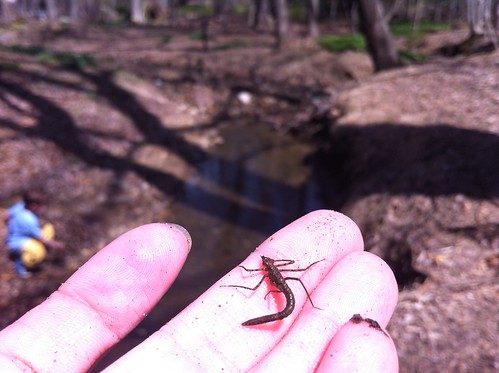
Montgomery County is home to hundreds of species of aquatic bugs ( Benthic Macroinvertebrates). These aquatic bugs process nutrients and energy, powering the stream ecosystem! Because they are crucial to the stream, they are excellent indicators of stream health.
Frequently Asked Questions
What is Benthic Macroinvertebrates or Stream Bug?
- A small organism that is visible to the naked eye
- Does not have a backbone
- Lives on the bottom of streams for at least part of their lives
- They include aquatic insects, crayfish, mussels, worms and leeches, snails, sponges, and flatworms.
Why call them Benthic Macroinvertebrates?
Benthic = bottom dwelling
Macro = visible without a microscope
Invertebrates = lack a backbone
Want to learn more about Benthic Macroinvertebrates? Check out the DNR Factsheet (PDF).
Why are stream bugs important?
Stream bugs are an important member of aquatic communities. Many stream bugs eat aquatic plants, algae, and terrestrial plants that fall into the water. Those bugs form the base of the food chain and are called Shredders.
Stream bugs are great indicators of stream health, because they:
- Live in the water for all or most of their life.
- Stay in areas suitable for their survival.
- Are easy to collect.
- Differ in their tolerance to amount and types of pollution
- Are relatively easy to identify in a laboratory
- Often live for more than one year
- Have limited mobility
Montgomery County categorizes stream bugs into groups based on their ability to withstand pollution. Each genus has a unique tolerance value that helps DEP assess the health of our streams.
Sensitive
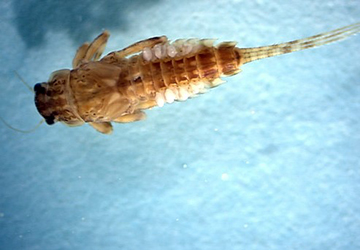 Mayfly Nymphs (Ephemeroptera)
Mayfly Nymphs (Ephemeroptera)  Stonefly Nymphs (Plecoptera)
Stonefly Nymphs (Plecoptera) 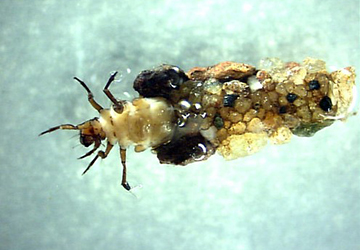 Caddisfly Larvae (Trichoptera)
Caddisfly Larvae (Trichoptera)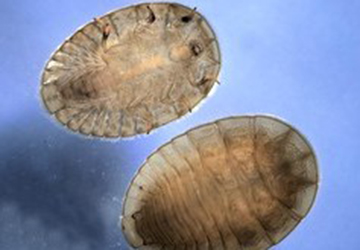 Water Pennies and Riffle Beetles (Coleoptera)
Water Pennies and Riffle Beetles (Coleoptera) 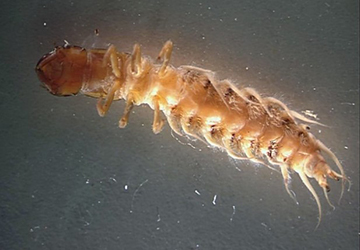 Dobsonfly Larvae (Megaloptera)
Dobsonfly Larvae (Megaloptera) 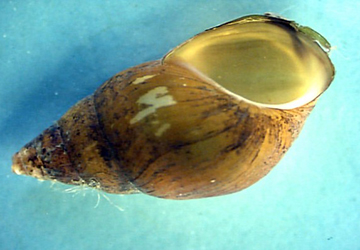 Gilled Snail
Gilled Snail Moderately Sensitive
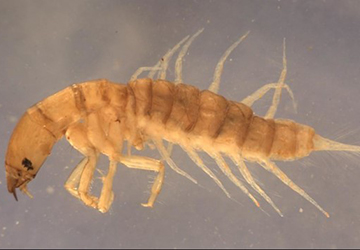 Alderfly
Alderfly 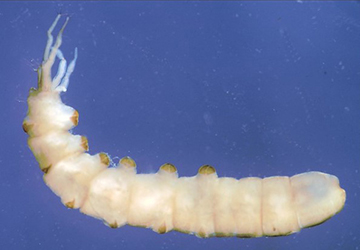 Cranefly
Cranefly  Dragonfly and Damselfly Nymphs (Odonata)
Dragonfly and Damselfly Nymphs (Odonata) 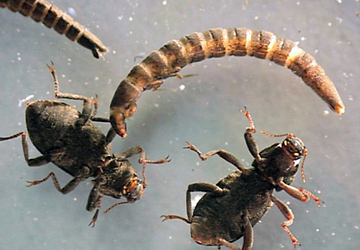 Rifle Beetles
Rifle Beetles 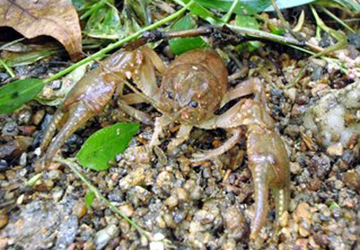 Freshwater Clams, Crayfish & Scuds
Freshwater Clams, Crayfish & Scuds Tolerant
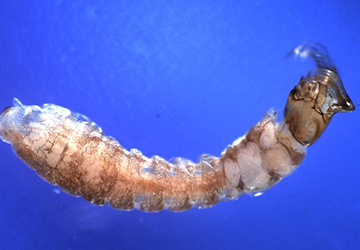 Blackfly & Non-biting Midges
Blackfly & Non-biting Midges 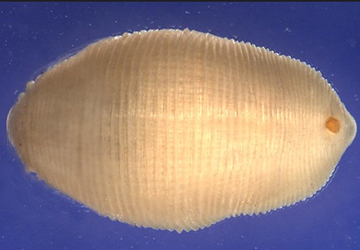 Leeches
Leeches 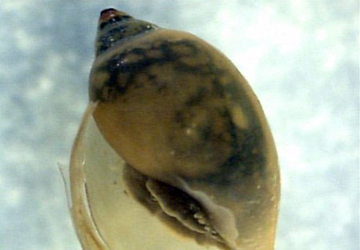 Snails
Snails Monitoring Stream Bugs
At the Department of Environmental Protection (DEP), we keep a close eye on the tiny creatures living in our streams, known as stream bugs or by their scientific name, benthic macroinvertebrates. We collect a sample of these bugs from the stream and take them to our lab to study. In the lab, we identify and count the bugs. Based on this information, we calculate different measures to assess the overall health and functioning of the stream. This approach helps us understand how healthy our streams and their ecosystems are.
Benthic Monitoring in County Waterways
Watch or Learn more
How does it work?
There are a total of eight metrics used when evaluating stream bugs; each metric is scored either as a one, three, or five and compared to known reference streams where conditions are similar. The highest possible final score is 40 (5 x 8). To determine the overall stream condition, benthic IBIs are averaged with fish IBIs.
| Score | Narrative |
|---|---|
| > or = 36 Excellent | Excellent |
| 26-35 Good | Good |
| 17-25 Fair | Fair |
| < 17 Poor | Poor |
| Field Name | Description |
|---|---|
| STATION | The station field is a nine character code that identifies the station name. The stations are a combination of the two letter code for the watershed+the two letter code for the subwatershed+ the single digit stream order code+ the sequential reach number. |
| DATE | The date the station was sampled. |
| SUMMARYSCORE | The final IBI summary score (1-5). |
| NARRATIVE | Descriptive word to describe the condition of the stream in relation to reference streams. Narratives are either Excellent (>4.5), Good (3.3-4.5), Fair (2.2-3.2), or Poor ( <2.2). |
Available Benthic Data
Montgomery County has tabular raw data and summaries for stream bugs from 1994-present for most monitoring sites. Also available are GIS coverages (or maps) showing their conditions. Maps can be made to order depending on the request.
| Field Name | Description |
|---|---|
| STATION | Two letter stream code + two letter stream reach code + order (1-4) + reach number (01-99). |
| DATE | The date the sample was taken. |
| TAXA | Benthic macroinvertebrates are identified to family. |
| [#GRIDS] | Number of grids sampled during subsampling routine to estimate benthic population sampled. |
| [#INDVS] | Number of macroinvertebrate individuals sampled from subsampling routine. |
| EXCLUDE | This is a taxa that is automatically excluded from further use in calculating metrics for IBI. |
| REPLICATE | This is a repeat of another sample. |